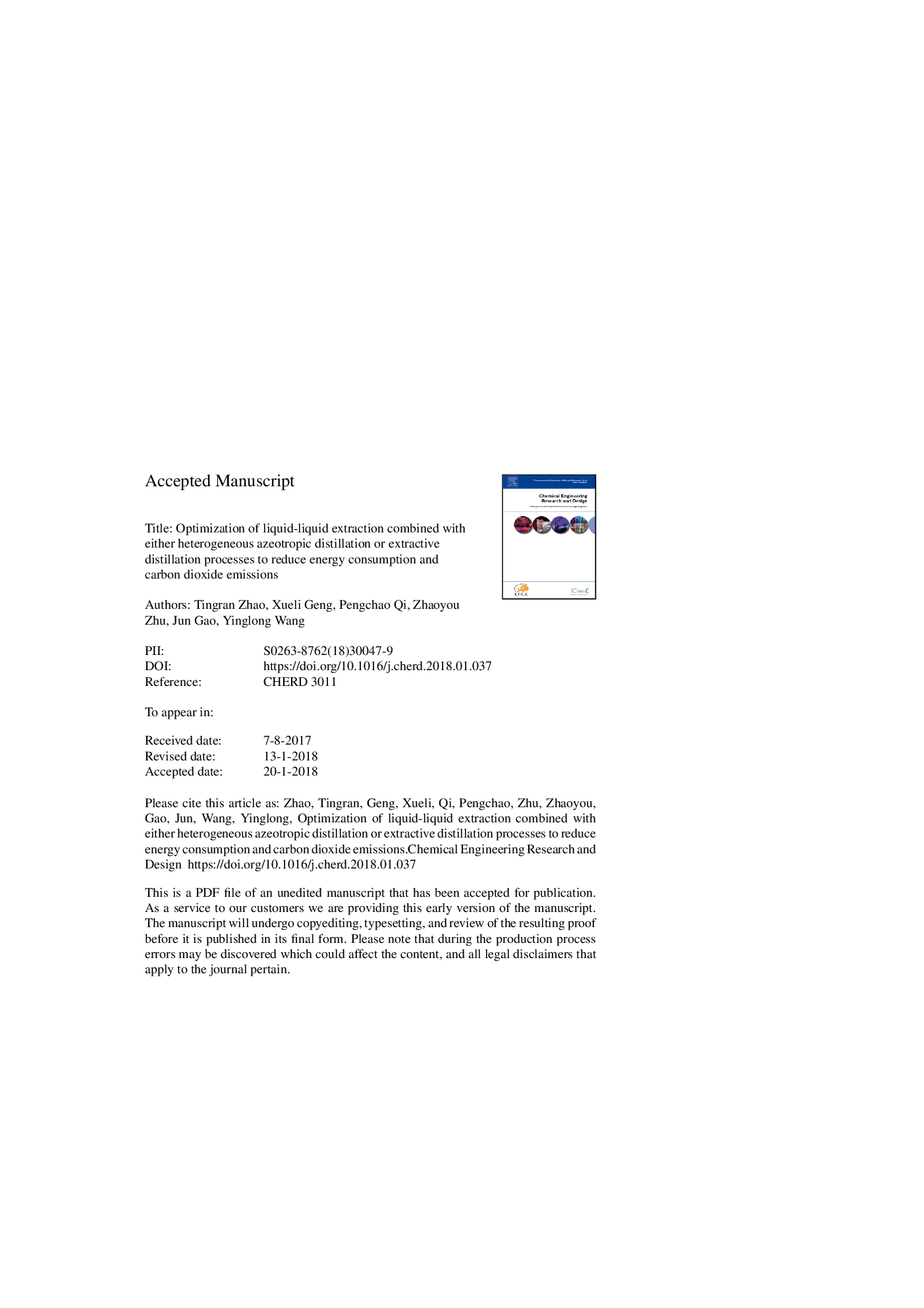| Article ID | Journal | Published Year | Pages | File Type |
|---|---|---|---|---|
| 7006068 | Chemical Engineering Research and Design | 2018 | 28 Pages |
Abstract
The mixture of propylene glycol methyl ether and water form a minimum-boiling azeotrope. To separate the binary azeotropic system, energy-saving liquid-liquid extraction combined with either heterogeneous azeotropic distillation or extractive distillation processes based upon traditional two-column heterogeneous azeotropic distillation and three-column extractive distillation processes were proposed, using chloroform and 2-ethylhexanoic acid as solvents, respectively. The minimum total annual cost (TAC), based on a sequential iterative optimization procedure, and CO2 emissions for the two processes were determined. Liquid-liquid extraction combined with heterogeneous azeotropic distillation process achieved significant reductions of 40.24% in the TAC and 45.37% in CO2 emissions compared with the traditional two-column heterogeneous azeotropic distillation process. The liquid-liquid extraction combined with extractive distillation process achieved TAC and CO2 emission reductions of 34.18% and 43.95%, respectively, compared with the traditional three-column extractive distillation process. Thus, the two processes are more attractive in terms of both economics and environmental protection.
Related Topics
Physical Sciences and Engineering
Chemical Engineering
Filtration and Separation
Authors
Tingran Zhao, Xueli Geng, Pengchao Qi, Zhaoyou Zhu, Jun Gao, Yinglong Wang,
